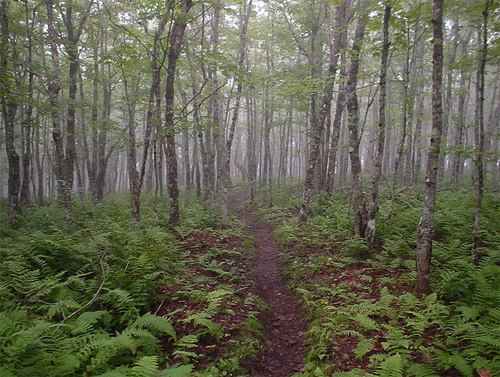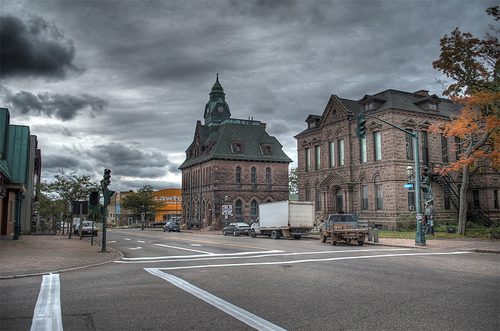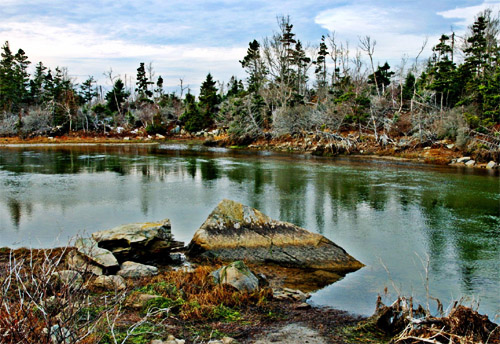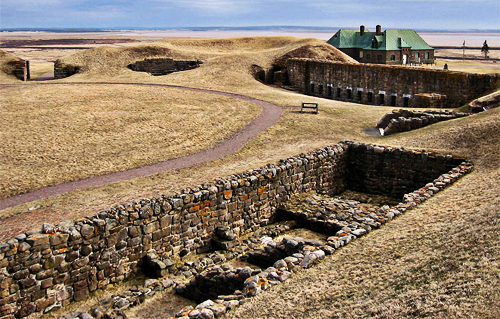The Isthmus connects Nova Scotia with mainland Canada. The land bridge is surrounded by water, bordered on the north with the Northumberland Strait and to the south by the Bay of Fundy. Most of the land here is low and flat -- as much of it is below sea level, it is prone to flooding. In spring, one is hard-pressed to find so much as a footstep of dry ground, and the terrain seems made entirely of mud. The inland areas range from salt marsh to swamp, with a smattering of sparse, piney forest. The most populous area prior to humanity's demise was the city of Amherst, situated around the southerly bay.
- More on the 'Souls Wiki
Amherst was a large and sprawling town in the time of humanity. Its remnants are a queer mix of early construction -- sprawling Victorian homes and stone churches -- and evidence of rising commercialism -- warehouses and big chain stores. The latter lined the long highways, clashing mightily with the old construction of Amherst on the smaller main streets. One thing both new warehouse and old Victorian share are the signs of natural reclamation -- even in this once-bustling town, signs of human occupation are decaying quickly. Saplings and shrubs sprout from cracks in the asphalt, and the sidewalks slowly lose their battle with the roots of elder trees.
- More on the 'Souls Wiki
The Black River reserve, named for the largest of the reserve's numerous rivers, is located along the Northumberland coast. The shore boasts long and rolling sand dunes, along with small barrier islands. Most of the islands are bare of vegetation and become submerged with the high tide -- both the dunes and the islands provide a home for the Harbor and Gray seal species. The inland park primarily consists of salt marshes, lagoons and sparse coastal forests. Pines and other hardy sorts of trees out-compete most deciduous trees; thus, the area remains green throughout the winter.
- More on the 'Souls Wiki
This fort was built in the mid-eighteenth century and became a historical attraction in its later years. Stone barracks still stand, their construction intended to withstand centuries and cannons. The foundations of other buildings remain, though their wooden parts have rotted. Many of the buildings made completely of wood have fallen to ruin; the fort's stone-walled museum still stands, although the roof has collapsed. Much of the surrounding area consists of low, rolling hills and remains devoid of extensive tree growth.
- More on the 'Souls Wiki





